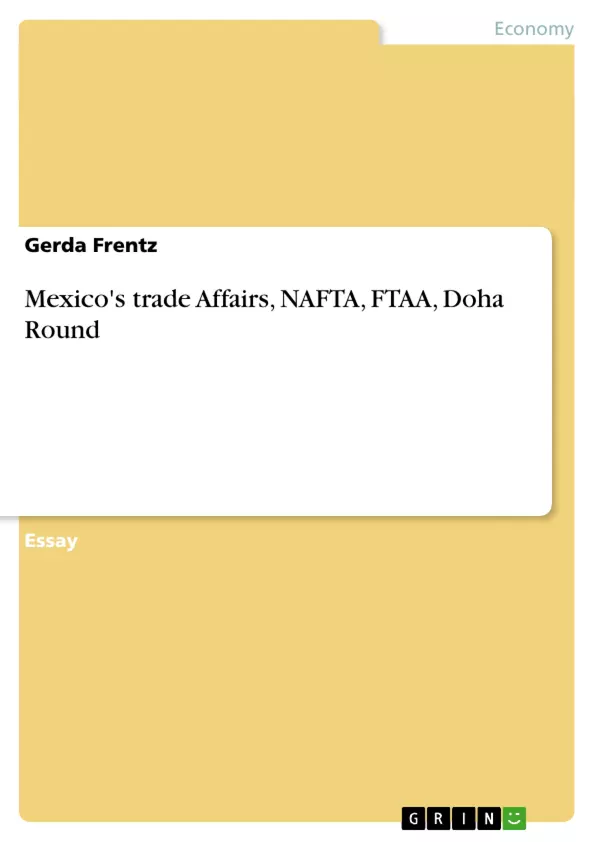The North American Free Trade Agreement is an agreement between Mexico, Canada and the USA, which is based on the principles of the European Union. It was established in January 1, 1994 and has the purpose to lower trading barriers as much as possible to reach a more fluent international trade, which means more gains from trade for each of the countries. Even though the three countries are neighbors it is remarkable that two first world countries and the third e.g. second world country, Mexico, are responsive to such a close agreement. One wonders how the interaction between those countries works. Indicators for poverty in Mexico are for example that in 2002 half of the population in Mexico was living in poverty and one fifth in extreme poverty. As we can see by taking a closer look to their GDP as an indicator for their financial and economic situations we recognize large differences between the two richer countries and Mexico, which of course does not belong to the poorest of the poor but still does not take in one of the first places in the world rank. [...]
Inhaltsverzeichnis (Table of Contents)
- Mexico as a NAFTA member
- NAFTA's influence on Mexico's agriculture
- NAFTA's influence on Mexico's industry
- Conclusion
- Mexico's position on.
- Mexico's position on.
- Conclusion: Multilateralism vs. Bilateralism
Zielsetzung und Themenschwerpunkte (Objectives and Key Themes)
This essay aims to analyze the impact of NAFTA on Mexico's economy, particularly in the agricultural and industrial sectors. It explores the degree to which NAFTA has contributed to Mexico's economic development and examines whether the agreement has created equal opportunities for Mexico in its trade relationships with the US and Canada.
- The influence of NAFTA on Mexico's agricultural and industrial sectors.
- The economic disparities between Mexico and its NAFTA partners.
- The role of subsidies and non-tariff barriers in shaping trade dynamics.
- The impact of NAFTA on employment and poverty levels in Mexico.
- The tension between multilateral and bilateral trade agreements in the context of NAFTA.
Zusammenfassung der Kapitel (Chapter Summaries)
- Mexico as a NAFTA member: This chapter introduces the North American Free Trade Agreement (NAFTA) and its purpose to facilitate trade between Mexico, Canada, and the USA. It highlights the economic disparities between the three countries and raises questions about the impact of NAFTA on Mexico's economic situation and the degree of equality in trade partnerships.
- NAFTA's influence on Mexico's agriculture: This chapter examines the role of agriculture in Mexico's economy and the impact of NAFTA on this sector. It explores the trade dynamics between Mexico and the US, including the role of subsidies and non-tariff barriers. It also discusses the decline in employment in Mexico's agricultural sector following NAFTA's implementation.
Schlüsselwörter (Keywords)
The primary focus of this essay is on the economic implications of NAFTA for Mexico. Key terms and concepts include NAFTA, agricultural trade, industrial development, subsidies, non-tariff barriers, economic inequality, employment, poverty, multilateralism, and bilateralism.
- Citar trabajo
- Gerda Frentz (Autor), 2006, Mexico's trade Affairs, NAFTA, FTAA, Doha Round, Múnich, GRIN Verlag, https://www.grin.com/document/69676



